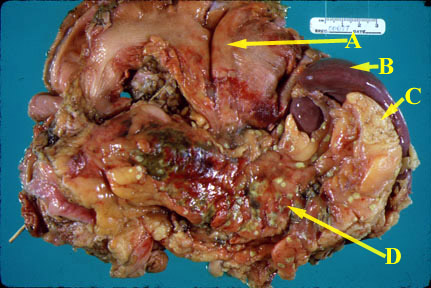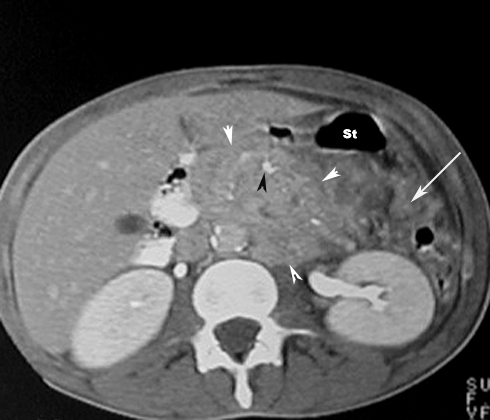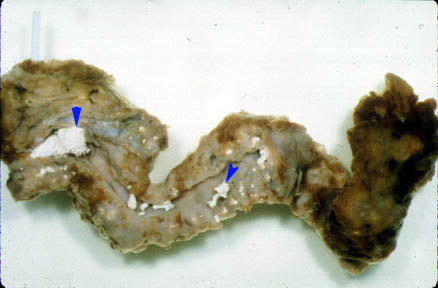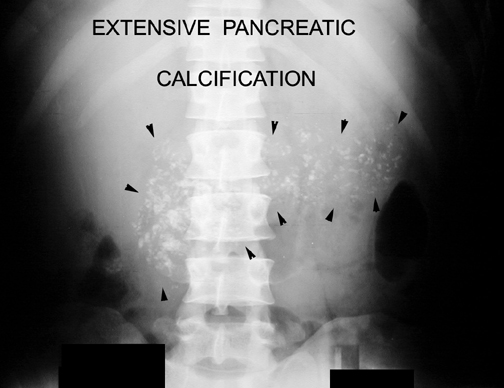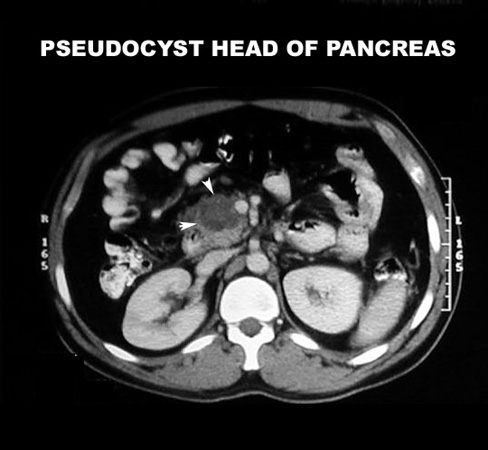Pancreatitis
Pathology
- Pancreas is edematous and enlarged.
- There can be extensive peripancreatic inflammation.
- Pancreas can show acute inflammation, suppuration and/or hemorrhage and extensive necrosis.
- Neutrophils infiltrate the edge of the necrotic areas and extend into the adjacent lobules of fat and produce fat necrosis.
- Fluid can accumulate in lesser sac and pleural space and paracolic gutters.
- Calcification can be seen in chronic pancreatitis.
Potential acute complications
- Abscess/pseudocyst
- As liquefaction of necrotic pancreatic tissue progresses, it will gradually take on the appearance of localized fluid collection - pseudocyst
- This may be in the region of the pancreas or extend beyond the pancreatic region
- Pancreatic rupture/hemorrhage
- Obstructive jaundice
- Pulmonary complications in severely ill patients - ARDS
- GI obstruction
- Acute renal failure
